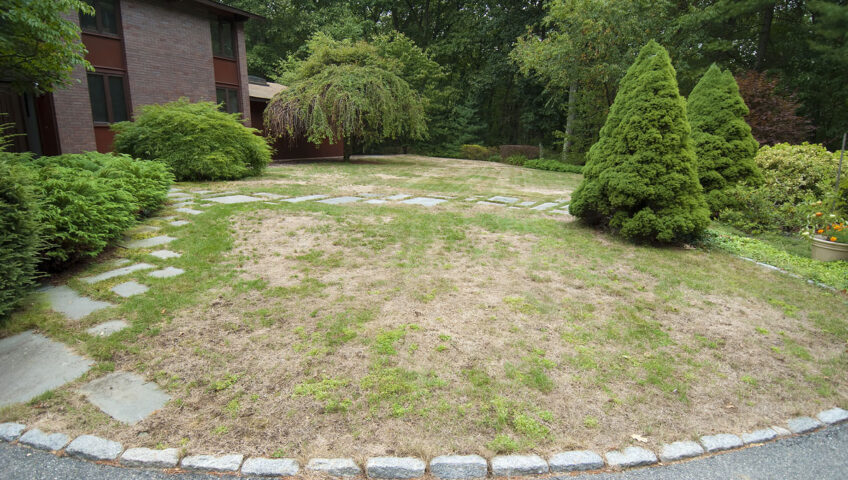Here is an update on some of the concerns we are seeing in our turfs and landscape beds currently in and around Lincoln. We are actively applying to the Department of Agriculture to have access to regulated and approved products to help curb these pests.
Brown Patch in Turf
Symptoms are reddish brown circular patches, with grass blades in or near the patch having irregular shaped tan lesions with red margins.
Unlike lesions of dollar spot, these usually do not encircle the leaf blade. Brown patch may be more noticeable in tall fescue lawns but Kentucky bluegrass is also affected. Brown patch is most often found in slower growing turf, but can show up in fast growing lawns after fertilization with fast release nitrogen sources (Liberty Lawn only applies at least 50% slow release fertilizer products). Fungicide controls in lawns may be needed. Know that younger lawns, 10 years old or younger, require more nitrogen fertilization than older lawns.
Dollar Spot in Lawns
Leaf blades exhibit straw-colored dead spots with reddish-brown margins; lesions pinched at center into an hour-glass shape; 4-6 inch dead spots in turf.
The best way to manage dollar spot in lawns is with a July application of fertilizer to help it grow out of the damage and fungicide applications may also be needed. To identify Dollar Spot, symptoms appear as four to six-inch, straw-colored patches of blighted turf. A bleached lesion in the shape of an hour glass is present on the leaf blade. The lesion has a characteristic reddish-brown margin. In early, dewy mornings, a cobweb-like mycelium is visible in the affected area.
Bagworms Hatching, Time to Control
Once overwintering eggs on trees begin to hatch, insecticide control can begin. Upon hatching, bagworms are about one-eighth of an inch long and difficult to detect. When bagworms are small, bacillus thuringiensis (kurstaki) and spinosad are biorational insecticides that can be applied to foliage to kill young caterpillars as they feed. While not the most effective means of protection against bagworm infestation, biorational insecticides kill caterpillars without causing harm to natural enemies. They must completely cover foliage and be consumed by bagworms to be effective. After the month of June, when bagworms are bigger, conventional insecticides need to be used and these may include malathion, acephate, carbaryl, bifenthrin, permethrin etc. Preventive or systemic insecticides containing dinotefuran are applied to the soil but these must be applied weeks before hatching, so it is too late to use these products now.
Please let us know if you have any questions or concerns. Have a great 4th of July, and Thank You for your business!

